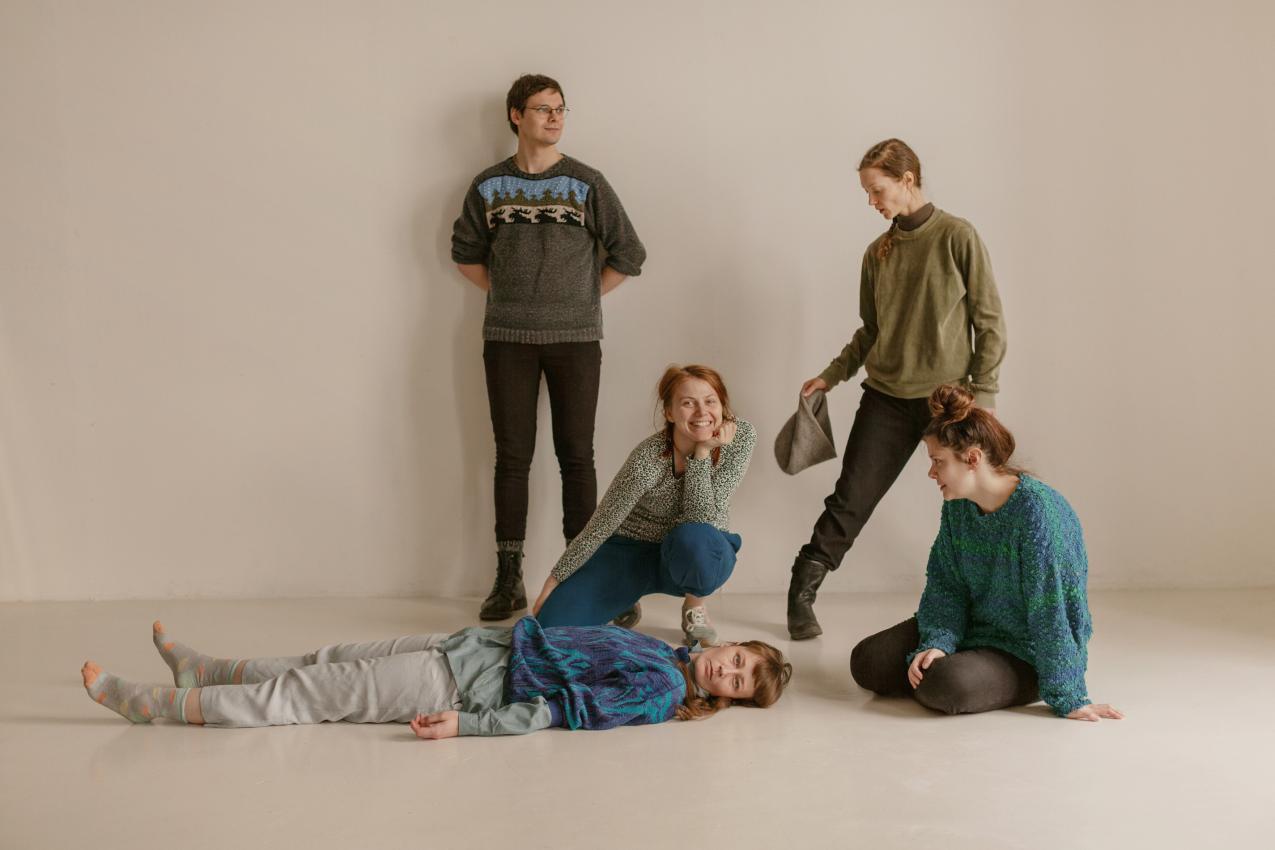1. Where did the idea for the work come? Where are the roots of this work?
The work came from the idea of wanting to explore and imagine together. The idea of ancestry comes from 3 choreographic streams and has evolved in the process through the whole working group.
It came from Gesa’s desire to enter the idea that "I’m not a single entity: I am composed out of many strands – cultural experiences; thoughts, imagined expectations and the wish to interconnect. I am in constant exchange and reshaping while in relation to all other co-composers.”
It came from Maikki’s curiosity: “what if the choreography was shared between us? And the wish to create a culture with peers that doesn’t exist in my life yet."
It came from Georgie’s inspiration from others: relating to “grandmother” and “younger family member” as the gate between, to time travel within oneself. “Could this be the place I can meet the grandmother I never met? And can I practice being ancestor?”
The roots of the work are in who we are in the world and to one another. Gesa coming from growing up with her family in a rural village in Northern Germany before venturing off on her own to dive into the constant dance of being shaped and reshaped as a dancer, a maker, a person... in various different cultures and countries other than her first home. Georgie’s moving roots as a New Zealander of Pākehā (meaning white European) descent from traveling parents, has informed a personal and inter-generational theme of moving through the world. Encountering and learning from different cultural experiences, relationships and their consequences has imbued a way of being with self and others. Maikki places herself as a Kouvola born dog-lover with a strong value in friendship. She has been paying rent for an apartment in Helsinki, London, Bethlehem and Auckland which has impacted her dance work. Colliding in friendship and colleague-hood through what we share and how we differ, the work is rooted in how we are sharing while respecting each of our origins and imaginations: in finding our way together.
2. What have you discovered so far about the nature of memories? And perhaps especially about their bodily nature? How to get connected with the grandbodies?
Maikki has discovered that she loves the variation between social and bodily memories, as well as their potential through exploring them. The present is the tickling memories. Georgie enjoys the surprises of how body memories can feel inseparable from the imagination and from relationality. Memories manifest through triggers between our bodies in space and they are moving, so where do they live actually?
Gesa is curious in relating to memories from multiple perspectives, non-fact based and non-linear but yet so intrinsically felt and experienced in and through the body. She is fascinated about such worm-holing journey that shifts the linear concept of time into a malleable playground. (Gesa is curious how the bodily perception of time can become a movement of its own. Hw the bodily sensations are ignited when they open to the relation of past experiences or when anticipating what is being expected)
We connect to the grandbodies through play and score-based practices. One involves the moment before death, others involve imagined ancestors. We share grandmother memories in random moments. We connect to living relatives and create fictional versions for our own artistic purposes (with ethical consent form them). We play with ghosts, imagine and practice being ancestors.
3. What kind of materials have you used during the process while trying to embody memories?
Hertas gestrickte Socken, old found wood, “ratti”, potkulauta, Mirjami’s windchimes, mother’s text message, own poems, Sofia’s collection, photographs, Riku’s sound, emails, phone calls, a portrait of Alice, songs, post-it notes, video.
Memory Matter Zodiak Stagella 21.–28.10.
